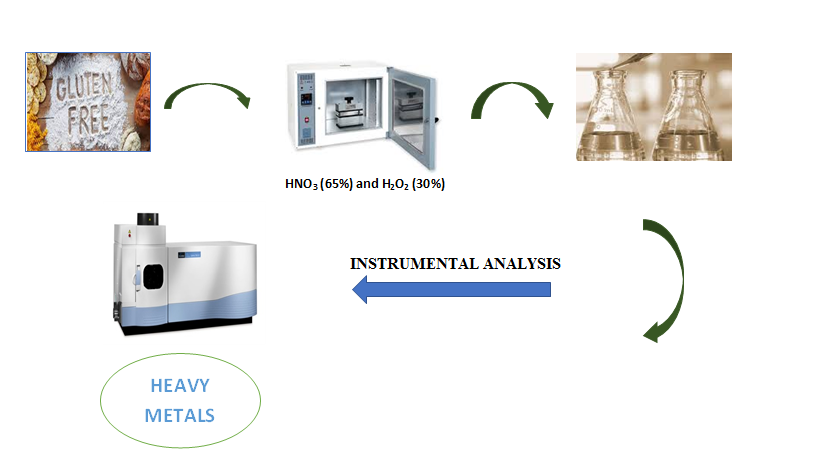JOURNAL 2578
Journal of Chemical Metrology
Year: 2022 Issue: 2 July-December
p.135 - 146
Viewed 2370 times.
GRAPHICAL ABSTRACT

ABSTRACT
In recent years, celiac disease has become known to the public with the development of medical diagnosis possibilities and increased awareness of the celiac disease. The only cure for celiac disease is a gluten-free diet that must be strictly followed for perpetuity. Food products with gluten content lower than 20 ppm are considered gluten-free products. With the increase in the number of people with celiac disease and people on a gluten-free diet, the amount and variety of gluten-free products have increased significantly. Rice and corn are the raw materials of gluten-free products. However, this situation causes people who follow a gluten-free diet to be exposed to a uniform diet and deficient in the intake of essential elements such as copper, iron, and manganese. In this study, 41 gluten-free products in Turkey were examined with ICP-OES as copper, iron, manganese, zinc, and strontium content, and the results were reported. The samples with the highest Cu concentration were corn and puffed rice at 51.45 mg/kg and vermicelli at 32.40 mg/kg. Chocolate sauce and cornflakes were the samples at 137.43 mg/kg and 117.20 mg/kg, respectively, with the highest Fe concentration. The highest Mn concentration was precooked chickpea flour at 20.80 mg/kg. The highest strontium concentration value was 12.85 mg/kg in carob flour. The samples with the highest Zn concentration were determined in yeast at 91.98 mg/kg and pistachio croquant at 85.50 mg/kg.
KEYWORDS- Celiac disease
- essential elements
- gluten
- gluten-free diet